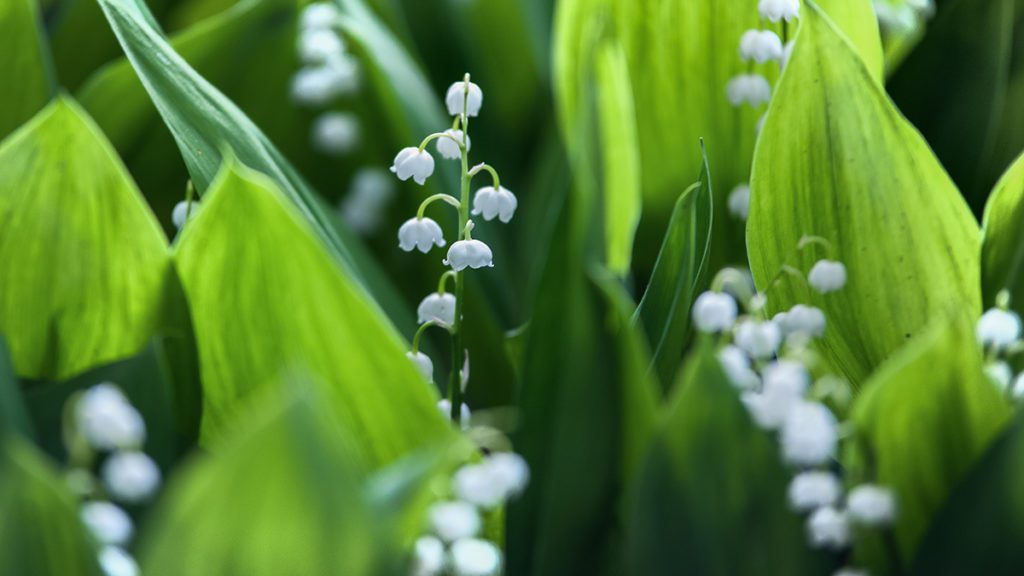Since the mild summer evening on which I once saw a white garden beautifully carried out it has lingered in my mind as indeed “such stuff as dreams are made on,” and one of the loveliest gardens I ever saw.
—prolific American gardening writer LOUISE BEEBE WILDER (1878-1938), whose books—particularly Colour in My Garden, 1918-are considered classic of the genre
Some years ago, I visited Sissinghurst Castle in Kent, the county known as “the garden of England.” There, set in the remains of the Elizabethan home was a white garden, planted by the owners of estate, writer Vita Sackville-West and her husband, diplomat Harold Nicholson, in the 1930s. Theirs was a complex but devoted marriage, best left for another time but beautifully described in one in the continuous stream of letters they wrote one another up to Vita’s death, in 1962: “Each of us knows that there is a common room where we meet on the basis of perfect understanding.” Harold wrote to his wife in 1942. Today Sissinghurst Castle Garden and its 450-acre working farm is a National Trust property. The gardens are meticulously maintained and draw thousands there every year. I mention this because, as Louise Wilder put it, Sissinghurst has lingered in my mind, to this day, as one of the loveliest gardens I ever saw—and, most uniquely, the white garden. Unless you see a white garden, you cannot know the endless tints of white Mother Nature can produce.
White in nature never is, nor ever can be, a cold color because white flowers play against the lush green of foliage, the variegated greys of stone walls and iron gates, the warm reds of brick, and undulating streams and lakes—all against the ever-changing sky from dawn into dusk, in all weather, and throughout the rotation of the seasons. There is cream-white, milk-white and the bluish cast of white skimmed-milk, and pearl white, and the textures— satin, velvet, glossy, and matte—unique to each plant. Most of all is movement (something we never consider, really) that falls light on the flowers’ whiteness—the climbers, streamers, vines and trellises, and flowering shrubs; the long-stemmed and the short-stemmed, the standing and the ground-cover.
To succeed in planting a white garden you must formulate your plan with the skill of an architect, select your plants with the eye of a Leonardo, plant them with the patience of Job, and nurture them with the love of a mother.
Criteria for your White Garden
 Photo courtesy of nationaltrust.org
Photo courtesy of nationaltrust.org
There is a criterion to be considered thoroughly for your white garden. What you choose must correspond with the zone, soil composition, altitude, climate, and moisture level of your garden.
- DEFINE YOUR PERIMETER. First select the shrubs and small trees that will define your garden’s perimeters, background, and accents. Height is the most important consideration. If you live in New England, consider Chamaedaphne calyculata, a leathery, narrow-leafed, 3-foot-tall evergreen shrub with white flowers that resemble Lily of the Valley. If you are looking for a tall border tree and live in the region between northern Florida and West Virginia, and as far west as Oklahoma, consider Halesia tetraptera, commonly called “silverbell” after its white, bell-shaped flowers.
- SELECT TALL BORDER PLANTS. Once you have established your border, select tall border plants to go in back of your garden and in front of the shrubs and trees. This creates depth and layers to your garden. Select plants such as white Hollyhocks and Delphinium.
- MEDIUM-HEIGHT PLANTS provide the middle-ground that will fill out your garden. This is where you want to choose seasonal flowering plants that allow the garden to bloom from spring into fall. White Climax, Phlox, “White Wands” Veronica, and chrysanthemum uliginosum (Giant Daisy), are fall-flowering plants. For spring, white Iris, Sweet William (or Meadowsweet), and white Astilbe japonica (False Goat’s Beard) are excellent choices for spring; and for summer, Clematis, Dropwort, Queen of the Meadow, white Geranium, “White Lady” Lobelia, and Vanhouttei Spiraea palmata for fullness are among the many wonderful types from which to choose.
- LOW-GROWING PLANTS are in the forefront of your garden and border the lawn or path, providing contrast and points-of-interest. Again, strive to maintain a continuous blooming from spring to fall with your selection so your garden remains vibrant and alive as early, and for as long, as possible. No flower heralds spring in beauty or scent like the Lily of the Valley and the viola cornuta—also known as the “Horned Pansy” or “Tufted Violet” is also a wonderful bedding plant with a light fragrance. Look to anemone and Perry White, Sedum album for summer-flowering carpet plants and for autumn, chrysanthemums and Asters.
As you plan your garden, have a selection of annuals in mind to fill the bare places as the spring and early summer plants run their natural course. Among the spring-flowering annuals are Candytuft, Sweet Sultan, Cornflower, Cosmos, Heliotrope White Queen, Larkspur, Pansies, Poppies, Petunias, Shasta, Sweet Peas, Stocks an Zinnas (tall and dwarf) to name but a few. However, the “bones” of your white garden will always be spring- and summer-flowering bulbs. Dahlias (tall and dwarf), Gladioli, Tuberroses (double and single), and Zephyranthes alba are summer-flowering bulbs and roots that can be planted in the spring. Most varieties, however, need to be planted in the fall plan now and give yourself ample time to plan ahead. One of the most beautiful gardens I have ever seen was a mansion in Washington, Connecticut, where an entire acre of garden had been planted with daffodils that had bloomed and propagated for years. For your white garden, consider the harbinger of spring, Crocus; Snowdrop, Hyacinths (double and single), Narcissus, and, of course, Tulips. Finally, set your white garden off with climbing trellis Clematis Duchess of Edinburgh, Moonflower, Wisteria and Climbing Roses to tie it all together.
Although you can go online, one of the great joys of planning a garden is curling up in front of your fireplace, sipping a glass of wine or cup of hot chocolate, and turning the pages of a catalog as you indulge in taking time to plan your own white garden.
Wayside Gardens
Jackson & Perkins
Bluestone Perennials
White Flower Farm
By Laurie Bogart Wiles


